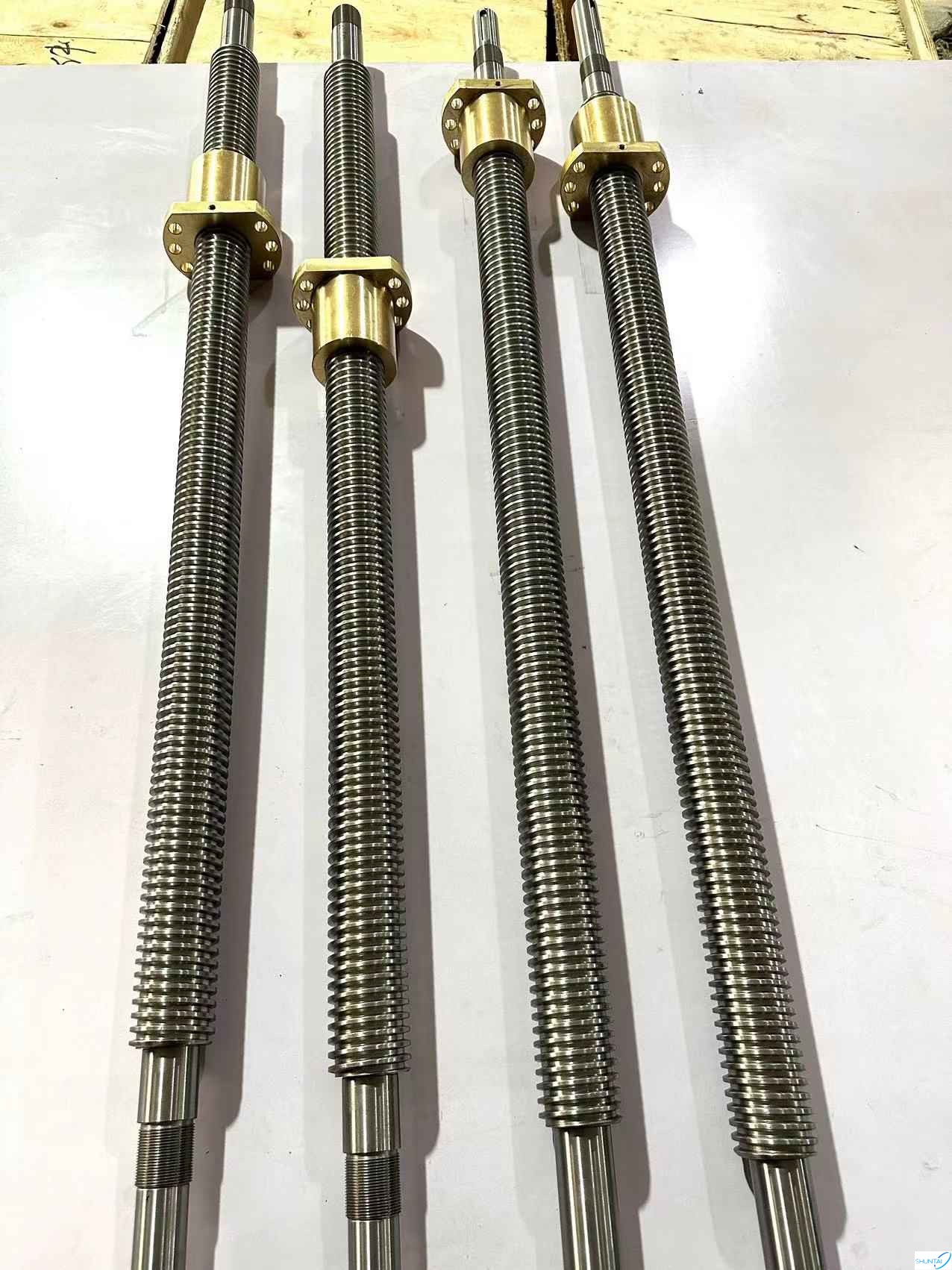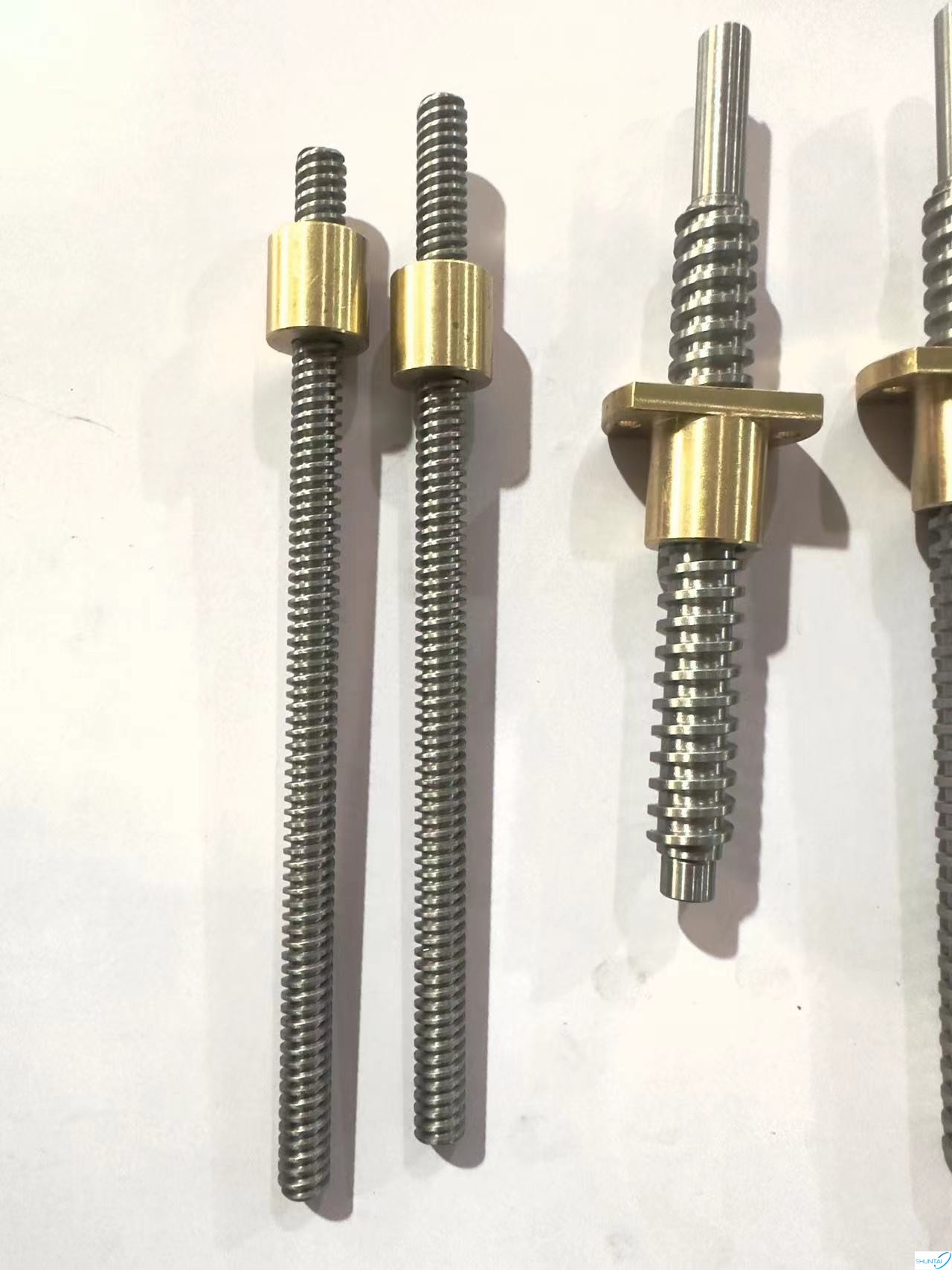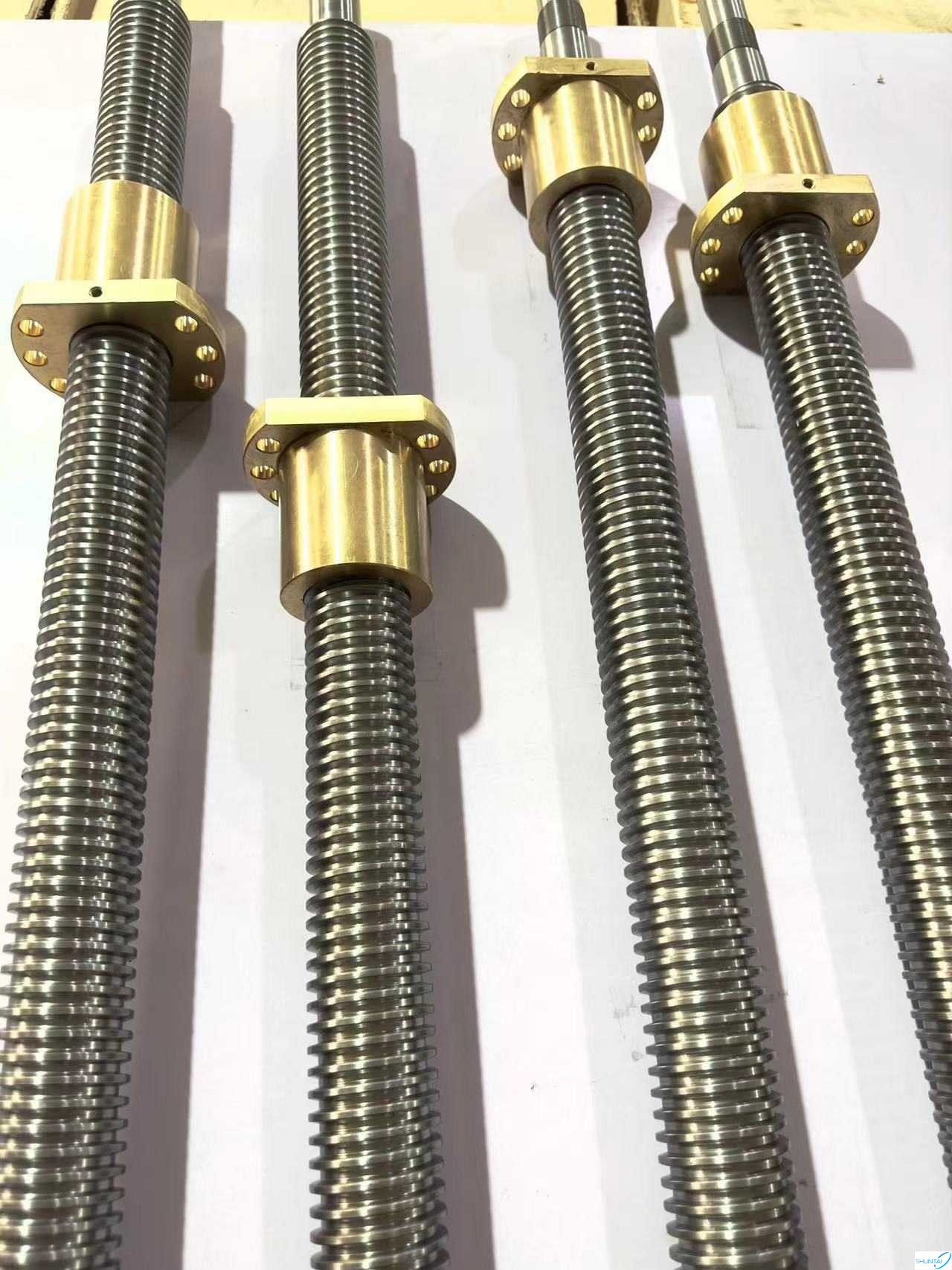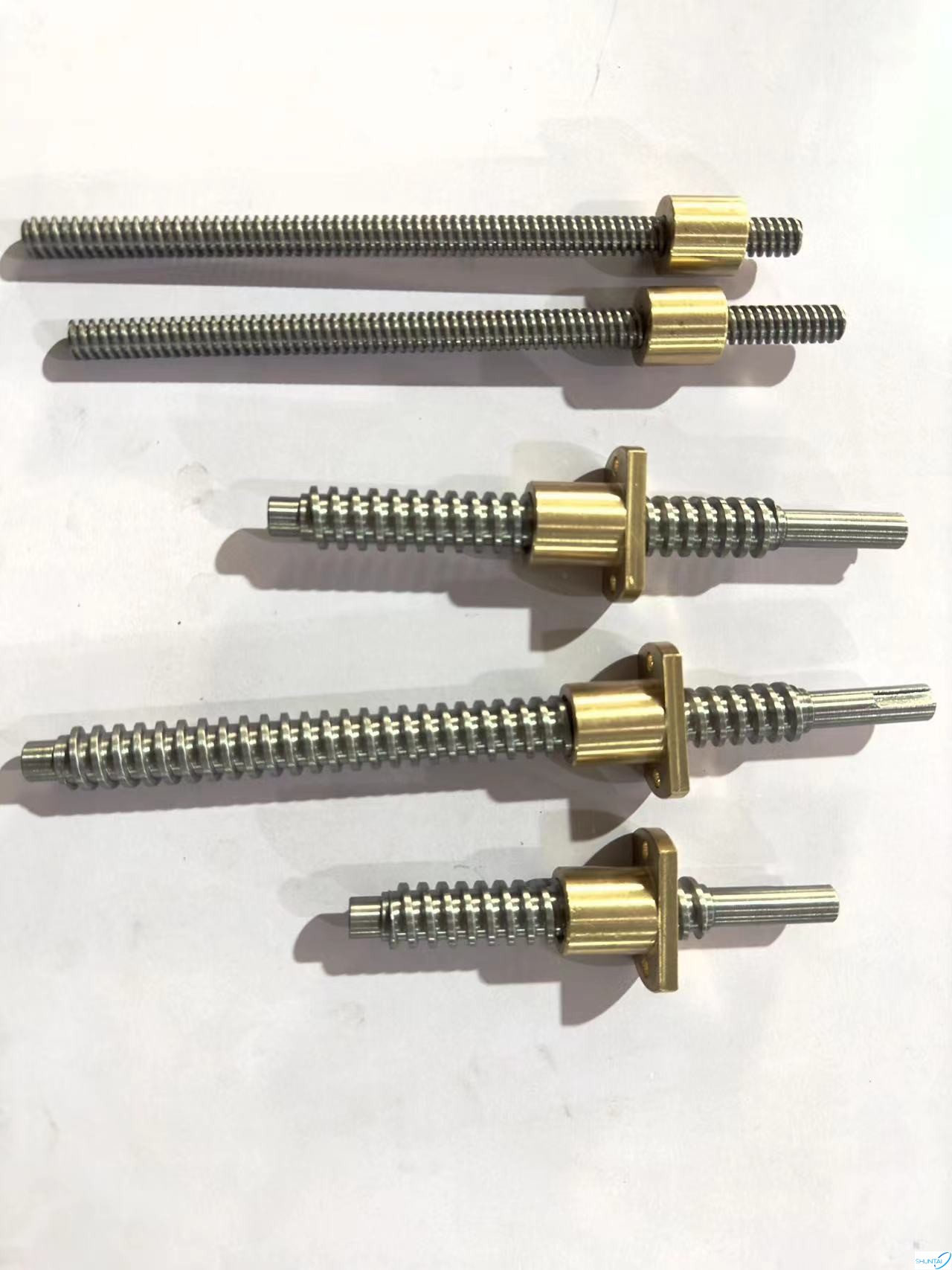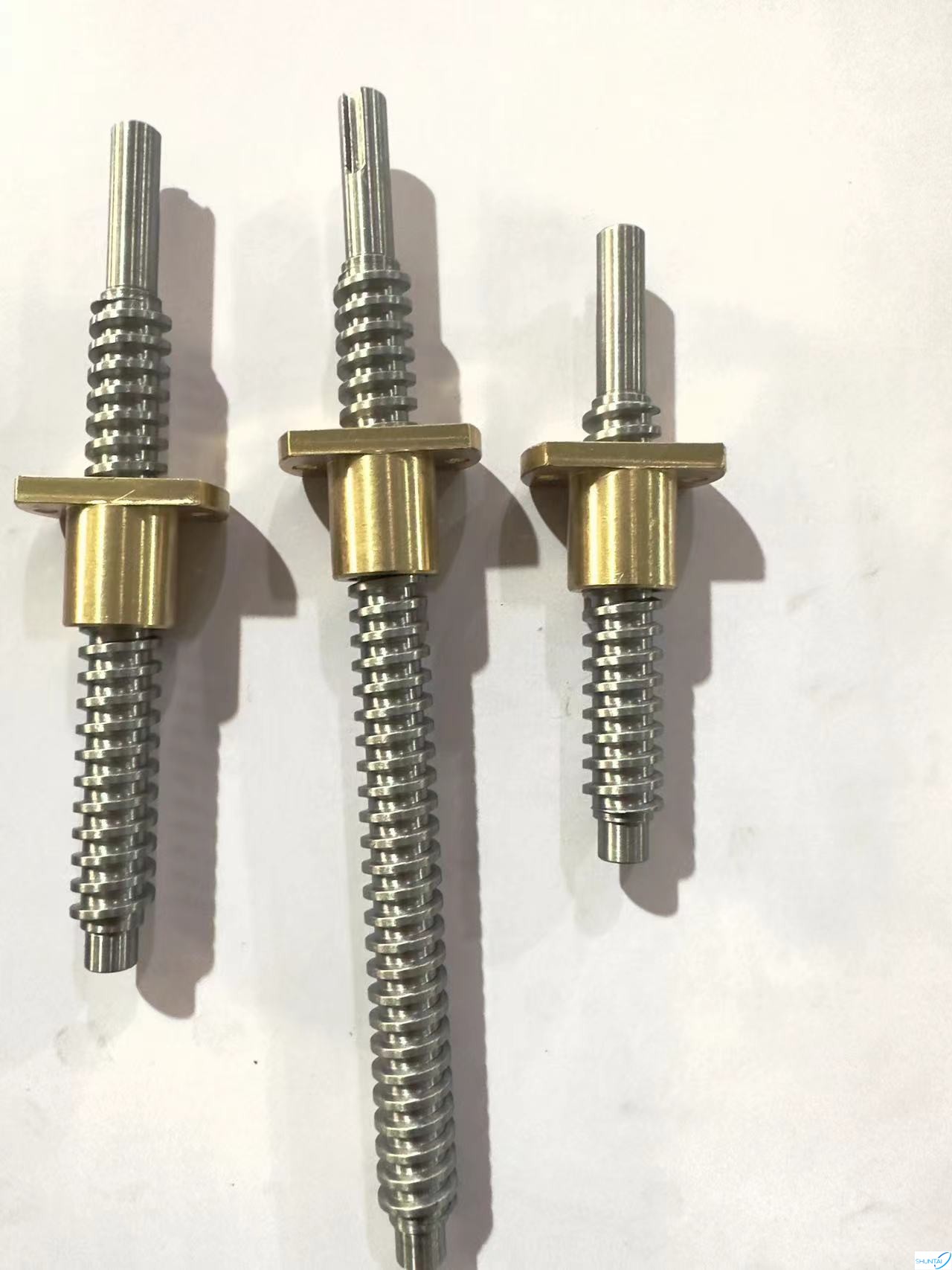A lead screw is a common mechanical transmission element used to convert rotary motion into linear motion. It consists of a threaded lead screw that engages a ball nut or threaded nut.
The thread of the trapezoidal screw usually adopts the trapezoidal thread shape, and the common types include triangular thread, rectangular thread and tapered thread. Threads are characterized by parallel helixes that convert rotational torque into linear motion by rotating the screw. The nut is the part that engages with the thread of the screw, and it moves on the screw to achieve linear motion.
Trapezoidal screw drive is simple and reliable, and is widely used in many industries and fields. They are primarily used in linear motion applications where low speeds, moderate loads, and relatively low cost are required. Common applications include industrial machinery and equipment, automation equipment, CNC machine tools, 3D printers, lifting platforms, etc.
Trapezoidal screws are less expensive to manufacture and more cost-effective than other types of screw drives such as ball screws. However, compared with the ball screw, the trapezoidal screw has greater friction, lower transmission efficiency, and more restrictions in high-speed and high-precision applications.
When selecting a lead screw, factors such as the application's load requirements, speed requirements, accuracy requirements, and budget need to be considered. Additionally, proper lubrication and maintenance are required to ensure proper operation and longevity of the lead screw drive system.


